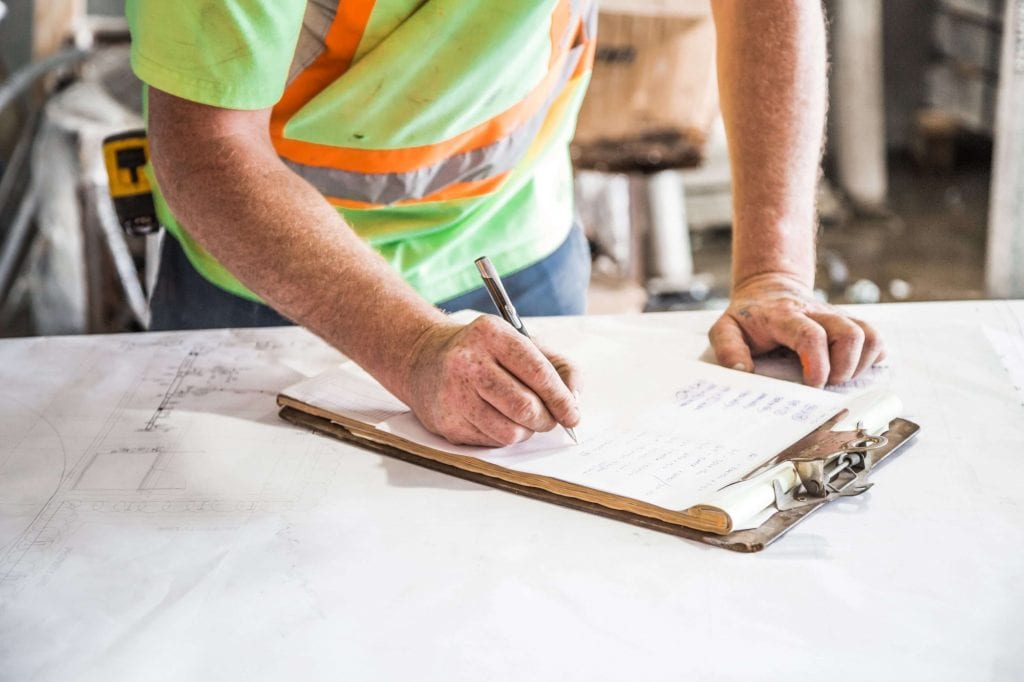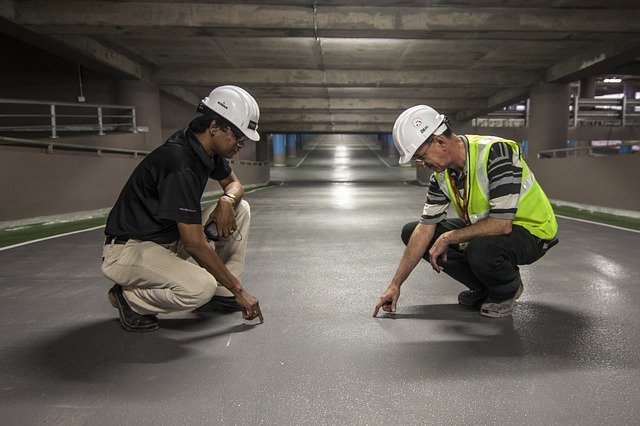Repaying a Development Loan
Borrowers will need to repay lenders according to the agreed term after the sale of the property. One of the greatest advantages of development finance is its flexibility for borrowers meaning that there are many different repayment options. In certain cases, an extension can be provided in order to give more time to secure the sale although this may incur additional costs.
When Do I Have to Repay the Development Loan?
At the beginning of the financial agreement, a repayment plan including timescales is agreed by both parties: those lending the money and those borrowing.

As part of this, lenders will want to see an ‘exit plan’ before agreeing to the loan. Development projects are usually repaid through sale or refinance.
Most common exit routes:
- Build to sell (sale of the finished property)
- Refinancing using a developer exit product
- Long term refinancing (including build to rent)
When Do I Pay Interest on the Loan?
You will typically pay the interest on this type of loan at the end of the loan term. As previously mentioned, the way your repayments on the loan work will vary depending on the details of your application (including your exit strategy).
The monthly interest on the loan will typically be rolled up and added onto the total amount owed by the borrower, to be repaid via the method agreed by them and the lender during the loan application process. This way, the interest is repaid on top of the rest of the loan at the end of the loan term.
How Much Interest Do I Need To Pay?
There is not a set rate for property development finance. When seeking this type of funding, you will be matched with the best lender for your project needs from a panel of specialist property development lenders who will negotiate the best rate for each proposal.
As such, interest rates will vary from lender to lender and depending on the specific details of the project. A reasonable starting point is around 6.0% interest rate. Typically, this can be rolled up into the loan to avoid the necessity for monthly payments.
Most facilities are set up to allow monthly interest charges to be repaid once the loan is redeemed. The interest is added to the facility, rather than the developer, so they can focus on the project rather than payments.
Thus, interest is payable upon completion of the project and the agreed exit strategy. If any units of the development are sold before the end of the project, those proceeds can also be put towards paying off the outstanding amount.
What Repayment Methods Are Available?
There are a variety of different repayment methods available for a development loan, each option coming with their own pros and cons, and types of borrowers they're best suited to. Some popular repayment methods for development loans include:
- Interest Only
- Rolled Up
- Development Exit Finance
Interest Only
Most development loans are arranged on an interest-only basis meaning that at the end of the works you need only repay the interest accumulated throughout the duration of the project. Development loans are typically short-term loans (between 6-18 months) so at the end of this period you would pay the interest. Eventually, you can pay off the full loan either as a lump sum or with higher monthly payments. This usually coincides with the sale of a unit or multiple units of the development.
Rolled Up
Rolled up interest payments mean that you pay everything back at the end of the project in one lump sum. This negates the need for monthly payments and allows developers to focus solely on the completion of the works. At the end, with the agreed exit strategy, they will pay back the loan with the accrued interest.
Development Exit Finance
Exit finance allows you to repay development finance before the sale of your development, should you choose to do so. Exit finance typically holds a lower rate than development finance. The key reasons to use this type of financing are:
- Reducing costs and increasing the profitability of the project
- To act as a buffer if your existing development finance is coming to an end and will not cover the end of your project
- In order to free up capital earlier leaving you more capital to fund future projects
Contact us at Octagon Capital to explore the best options for development finance
David Beard Comment - From Lending Expert - "Second Charge Lenders Still Have a Good Appetite"
Second charge lenders still have a good appetite, explains David Beard, the founder of Lending Expert, one of the UK's leading price comparison websites.
Beard explains that whilst the UK is in its third lockdown, the housing market remains open and property valuations can still take place, allowing applications to be processed and deals to be completed across second charge loans, mortgages, bridging loans and more.
David Beard, founder of Lending Expert, explained:
“While business levels were quite significantly effected during the first national lockdown in March 2020, it’s now “business as usual” during this third lockdown for the secured loans industry.”
“January 2021 is showing that many second charge lenders still have a good appetite to lend and borrowing rates and products have mostly remained unchanged. The key differences to note are during this third national lockdown is that the housing market has remained open and lenders are able to instruct surveyors for home valuations which is critical to successfully carry out secured lending and mortgage applications.”
“This time round there is no restriction on physical valuations and for over a decade the industry has offered a huge range of products available using Hometrack or similar desktop valuation models.”

Stamp duty deadline also likely to play a role
With the upcoming stamp duty deadline of 31st March 2021, this will certainly play a role in boosting mortgage applications and deals in Q1. With those properties under £500,000 in the UK incurring zero stamp duty, there is certainly an incentive for first-time buyers, homeowners and developers to make an application or complete on a purchase, giving them a saving of £15,000.
With the deadline around 8 weeks away, this will certainly be a busy time for borrowers, brokers and lenders and this will continue to drive the second charge and general mortgage market, certainly in Q1.
What remains after in Q2 is yet to be determined and it could result in a major house pricing crash or a surge in house prices too.
About second charges
Second charge loans are used by developers and homeowners as a way to raise additional funds on an existing mortgage. The amount you can borrow is a little less than your first mortgage and it is known as a second charge because it is the second priority after your first mortgage has been paid. For developers, second charges are used to pay off existing debts, renovations, building work or finance a new property. For homeowners, second mortgages are often used to raise funds for debt consolidation, school fees, weddings and more. There is always a risk of repossession if you cannot repay your loan on time, or you may have to give up equity in your first original property to the outstanding lender.
A Guide on How to Become a Property Surveyor - The Qualifications, Salary and Skill Requirements
To give you an insight into the profession of a property surveyor, Octagon Capital looks at everything you need to know about becoming a property surveyor.
Key Points
- A property surveyor is a qualified professional who is brought into to assess the structural integrity of a building - maybe for purchase, sale or valuation purposes
- A graduate surveyor can earn between £22,000 to £26,000
What does a property surveyor do?
A property surveyor is a qualified professional that assesses the structural integrity and quality of a building - including homes, offices, retail stores, garages and more.
A surveyor is typically brought in to assess the quality and value of a property, which the owner may wish to put on the market or better understand the value of their asset. The role of the surveyor is key to highlight any risks for potential owners or buyers and their involvement is usually a requirement to complete on any kind of property purchase, mortgage deal or even a bridging loan.
Property surveyors work in housing (residential) or for offices and retailers (commercial).
There are several titles under the role of a property surveyor including building surveyor, land surveyor or chartered surveyor.
What are the key responsibilities of a property surveyor?
Property surveyors essentially contribute towards the smooth running of the property market. Their main responsibilities typically involve:
- Analysing progress reports
- Dealing with planning applications
- Following health and safety regulations
- Reviewing project tenders
- Conducting risk assessment and cost control
- Advising subcontractors and clients
- Preparing scheme designs with costings and specifications
- Carrying out feasibility studies

A property surveyor checks the quality and integrity of a property or building and their role is key to proceed with a mortgage or property purchase.
What is the salary of a property surveyor?
Graduate surveyors can expect to earn between £22,000 to £26,000 and with a few years of experience, this can rise to the bracket of £28,000 to £50,000.
Senior level surveyors can expect to earn upwards of £70,000 and there is even potential to reach a six-figure salary at partner or director level.
Property surveyor salaries not only depend on experience, but also location. Surveyors based in central London can expect higher salaries than those operating outside of the capital.
According to the RICS Macdonald & Company Rewards & Attitudes Survey conducted in 2019, the average salary of a property surveyor was £48,000. Chartered surveyors were found to earn around 38% than those non-chartered.
What qualifications do you need to become a property surveyor?
To become a property surveyor, there are typical requirements of a degree or professional qualification approved by the Royal Institute of Chartered Surveyors (RICS) in one of the following subjects:
- Civil engineering
- Building engineering
- Property
- Construction
- Surveying
Studying a RICS-accredited degree or qualification will give you the relevant training to become a chartered surveyor.
This can be completed at undergraduate level in 3 years - see RICS Courses for more information.
Courses can also be completed online here at https://academy.rics.org/
Another option is getting a postgraduate qualification with a RICS-accredited Masters degree which will lead towards chartered training. Some employers may even support students taking this course with funding.
Additionally, there are apprenticeship opportunities for those who do not wish to go down the formal further or higher education route - https://www.rics.org/uk/surveying-profession/what-is-surveying/surveying-apprenticeships/
What skills do you need to become a property surveyor?
If the idea of working as a property surveyor interests you, it is important to check whether you have the right skills required for the job role before going further. Property surveyors need to have:
- A driving license (to visit different sites)
- A local and practical mind
- Strong oral and written communication skills
- The ability to build strong relationships with clients and peers
- Knowledge and interest in buildings and construction
- Negotiation, presentation and report writing skills
- Commercial awareness

A property surveyor should have good communication skills and have a good knowledge of buildings and property.
Can you work as a freelancer or with a firm?
Yes, It is possible to freelance as a property surveyor, but the decision to do so usually comes after several years of experience and building up a reputable client base. Going freelance suits those who may wish to specialise in one particular area, such as building defects or sustainability.
Typical career prospects for a property surveyor who is not freelance include working within the public sector or organisations. In large organisations, there are often formal channels of promotion and greater responsibility.
Either way, the environment you work in will certainly vary from day-to-day. For instance, you could be working on a construction site one day, and then from home or in an office the next.
The governing bodies for surveyors in the UK
RICS - https://www.rics.org/uk/
The Ecclesiastical Architects & Surveyors Association (EASA) - https://www.easanet.co.uk/
Is Mezzanine Financing Right For Me?
Who is Mezzanine Finance For?
Mezzanine finance can be the right option for those looking to develop a high-risk, high-potential project. It can be a way to borrow a large amount of capital in the short-run with flexible repayment. Depending on the project, it is worth considering all options including bridging loans, development finance and speaking with expert investors.
Am I Eligible for Mezzanine Finance?
Before deciding whether mezzanine finance is the right choice for you, it is worth checking whether or not you are eligible to receive it.
The eligibility criteria for mezzanine finance with Octagon Capital are the following:
- You must be based in UK, Scotland or Wales
- Must offer up to 20% in equity
- All properties considered including commercial and residential
- All credit histories considered
- Must be a limited company
What are the Advantages of Mezzanine Finance?
For companies looking to borrow money, there are many benefits to mezzanine financing. Not only does it provide them access to capital, it can often mean borrowing more money than traditional loans can offer. Borrowers can also minimise their equity dilution rather than trading a substation amount of equity for capital.

One of the key benefits of mezzanine financing is flexible repayment for borrowers. There are multiple options available including cash, adding to the loan balance or providing equity for the lenders. It also allows them an element of flexibility when presenting debt as they are able to list mezzanine loans as equity on their company balance sheet. Additionally, interest payments can be deductible to the business.
What are the Drawbacks?
Like any loan, there is always a financial risk. Mezzanine financing is typically synonymous with high interest rates. As such, businesses may be faced with big debts in the case of company failure. One of the conditions of mezzanine loans is that if borrowers are unable to make repayment in cash, they may have to recompense lenders with equity interests. Because this type of financing is a high risk for lenders, it means that lenders can set high interest rates or make other specific demands.
How Much Does Mezzanine Finance Cost?

Mezzanine loans can be more expensive than traditional types of borrowing, interest rates typically starting at around 12% per annum.
However, the true cost of a mezzanine loan will vary from borrower to borrower, depending on the circumstances and the details provided during the loan application.
If you want to find out more about mezzanine finance, including the costs involved you can call us on 0333 414 1491 or email sales@octagoncapital.co.uk.
Lender Perspective: Is it a good idea to provide mezzanine financing?
One of the biggest advantages for lenders is the high interest rates associated with mezzanine financing. To balance out the high risk, it means that the eventual pay out can be very high. Additionally, lenders could potentially receive equity. If a business succeeds, this could be hugely profitable for the lender.
Despite the pros, it is important to note the high risk nature of this type of financing. Whilst lenders are always at risk of losing money to default, this is especially true for mezzanine loans. Additionally, the fact that they are considered “low priority” loans means that, in a worst case scenario of bankruptcy, lenders risk never being repaid.
How Do Mezzanine Loans Work?
- Mezzanine loans blend equity and debt and sits somewhere between senior debt and equity
- They are associated with high interest rates but flexible repayment plans
- Mezzanine financing can be advantageous for companies looking to accelerate at a faster rate than traditional lenders can offer
How do Mezzanine Loans Work?
Mezzanine financing acts as a capital resource and falls between senior debt and equity. Through this, it maximises the total leverage with negligible equity dilution. The terms and conditions of a mezzanine loan are dependent on the agreement between a business and the lender. For lenders, mezzanine loans balance out the high risk with potential for extremely high rate of return, often receiving annual rates of between 12% and 20%, and even as high as 30%.
When working as a mezzanine lender, it is recommendable to work with an already established company with a successful history of business transactions. If investing in a less established business or start-up, the stakes are higher, and there is more risk. As such, the interest rate may be higher and the repayment plan more flexible. Whatever the agreed terms, mezzanine loans blend debt and company equity to benefit both parties. Typically, mezzanine loans have a fixed interest rate with no amortisation.
Characteristics of a Mezzanine Loan
- They are subordinate loan and are low priority compared to senior debt but take priority over common stock
- They have higher yield potential than ordinary debt
- There is no amortisation
- Repayment is usually flexible: Mezzanine loans can be structured as part fixed and part variable interest
- They are commonly unsecured debts (not backed by collateral)
Repayment Plans and Interest Rates
Mezzanine loans are associated with higher costs than traditional borrowing. Lenders can ask for traditional repayment (often in the double-digits) or they could request equity exposure in order to supplement the interest.

Repayment plans tend to be more flexible with these types of loans. For businesses, cash flow is not always available. Mezzanine loans recognise this and, as such, offer the option for companies to capitalise interest charge by means of ‘payment in kind’ (PIK). This means that the company is able to offer repayment in a form other than cash. This can be a good or service but, in this case, typically refers to bonds, stock or equity.
When Do you Have To Pay Back an Equity Loan?
Mezzanine loans are an example of a subordinated loan. This means that they are low priority for repayment. In the event of a business failing, it is possible that they are not able to cover all of their debts. In the hierarchy of repayment, mezzanine loan repayment is low priority and can only be paid after all other, high priority payments have been covered. Top priority payments are usually the banks and senior shareholders. Mezzanine loans are further down the list than these payments but they fall above common equity.
Mezzanine Finance vs Senior Debt
What is Senior Debt?
Senior debt refers to the level of priority a loan repayment holds. This type of debt has priority over other repayments meaning that it is borrowed money which a company must first repay if it goes out of business. Senior debt has priority over all other classes of debt and other classes of equity. Subsequently, if a company is suffering financial difficulties or liquidation, these debt holders will have a priority claim.
Which Loans are Classified As Senior Debt?
The majority of secure loans would be classified as senior debt. Loans taken out from banks, other financial institutions and high-grade debt securities including mortgage bonds would all be considered senior debt.

Subsequently, this type of debt is considered “low-risk” from a lender perspective. These loans are often issued by large and secure financial institutions with pooled capital. Due to this, these loans typically offers a lower interest rate than subordinate loans.
Order of Priorities
Each type of financial assistance has a different priority level when being repaid. Senior debt takes priority over other borrowed money if a company enters financial problems and is the first tier of liabilities for a company. They are considered top priority as they are usually secured against collateral. Junior or subordinated debt falls lower on the list meaning that a company has less pressure to pay back these loans. However, this comes at the price of higher interest rates. Preferred stockholders are lower still and common stockholders are last on the list.
Junior Debt
Junior debt, also known as subordinate debt, takes a lower priority position because of their relative high risk. Yet, they generally pay greater yields than other loans. As such, it is riskier for an investor to own but can deliver a higher rate of return. These creditors have access to a company’s assets only after the senior debt has been repaid.
How Does Senior Debt Differ from Mezzanine Finance?
Mezzanine finance is a type of junior debt meaning is it lower in the list of priorities when paying off debt. This is compensated by the high potential that they offer lenders. Mezzanine loans are typically high-yield and high-risk and combine debt and equity.
Octagon Capital allows you to take out as much as £25 million in a mezzanine finance loan, much higher than you would be able to obtain financial institutions or banks. However, to balance this out, a lender also takes a stake of the business due to its high potential. Unlike senior debt, mezzanine finance is not secured against any form of collateral.
The Regulations You Need to Be Aware of When Buying a New Home
Buying a home is both exciting and terrifying at the same time. It is a process that can throw surprises at you along the way, that can become increasingly expensive the more you dig and yet can leave you residing in your dream property when it concludes.
There are few regulations placed upon you as a buyer, but there are aspects of owning a home you should be aware of before you decide to purchase, especially if you are buying an older home. If you are purchasing a new build, then there is less likelihood of complications from a survey, although you should still have certain criteria satisfied.
Energy Performance Certificate (EPC)
The main regulation you should find useful is the Energy Performance Certificate, known as the EPC, which is mandatory for homes when they are built, sold or let. It covers aspects of thermal efficiency and gives your home a rating from A to G – A being the most efficient and thus likely to cost you less in energy bills. Now more than ever before, insulating your home is an important business, a topic we explore in our article Why is Property Insulation so Important?
Survey-Dependent Regulations
As Property Industry Eye discusses, there is a drive to reintroduce a compulsory pack for home sellers, like the defunct Home Information Pack. It was a short-lived method by which a seller put together a pack of information about their home prior to it going on the market, much like a survey but conducted before a buyer had been found. They were compulsory until May 2010, but a similar project has yet to become mandatory in the UK. That means in terms of regulations, the only other ones you need to be aware of are directly affected by your survey, usually conducted by your mortgage company ahead of any purchase.
These cannot be avoided, and they are intended to give your lender a clear picture of the property they are lending money against. These could throw up all manner of problems which need resolving before you are loaned money, or that you must pay attention to in the first six months of moving in.
Typically, older homes tend to fall foul of surveys, with electrics and damp being two of the key areas which you may have to look to carry out remedial work on. Electricity can be dangerous and in older homes, particularly those that have been advertised as ‘in need of modernisation’, you may have to have a full rewire carried out. Even if you only need certain parts of the system looked at, the NICEIC regulations are far-reaching and demand a qualified contractor to work on the property. Failed wiring, fuse box breakdowns, or even broken power sockets are all serious problems facing homeowners at any time, but in a new property you may not be aware of previous problems or potential ones.
However, HomeServe outlines how with electrical insurance cover you can protect yourself from any unforeseen dangers, and against the cost of expensive repairs in the event of breakdown or malfunction. It is especially important to pay attention to this aspect of your home not only when you move in, but in the months after the purchase. It is somewhat ironic that if you bought a faulty TV and the problem became apparent a week after you purchased it, you could return it, but you are afforded no such protection with your home.

If you are asked to carry out work that involves your gas supply, you will also need to consult a qualified engineered, one who is CORGI registered. This is less likely on a survey but is still something you should consider. Regulations around the following are not as stringent, and there is flexibility for you as the purchaser:
- Plumbers
- Decorators
- Bricklayers
However, being cautious is still advisable even if the project does not demand a specific qualification, as electrics and gas do.
In terms of regulations that cover what you need to be aware of, the randomness of the survey is something to keep an eye out for. Some properties may have asbestos that needs removing, others may have bats in the loft – both of which are covered by certain regulations. If you are in any doubt, make sure you opt for a more expensive and thorough survey, as it is usually an option, and carefully pour over the recommendations and suggestions contained within.
This way, you can enjoy your new home not only when you move in, but for many years to come.
How to Keep Building Sites Safe During Covid-19
The construction industry continues to boom during the pandemic. Following a quiet lockdown period from March to May, there has been a real eagerness to complete on properties and carry out renovations, making the most of the stamp duty cuts and trying to capitalise before another pandemic or lockdown emerges.
The property market continues to very busy, with a record number of mortgage approvals and applications for construction finance.
But with construction booming across the UK capital and other regions, it is important that any construction workers are still minimising any risk of the covid-19 pandemic spreading, especially for their colleagues and any clients living or working in their homes. Octagon provides some advice for keeping build sites safe during covid-19.
Allow for Open Spaces
Construction sites are typically in the open air - and this is something that reduces the risk of covid-19 spreading. However, as a site comes closer to completion, the spaces become enclosed, especially if you have the client living in the home at the same time. In this case, you have to take measures to make sure that windows are always open and that the spaces are not confined. You can also consider making areas just for workers or builders and not accessible for household members.
Hand Washing Stations
Using hand sanitisers or hand washing stations are important to avoid the germs and virus spreading. If you are bringing materials from different locations, you want to ensure that your hands are clean (or you are wearing gloves) and they are washed every time you leave and enter.
Some construction sites will already have hand washing stations, assuming there is a kitchen installed.
You can also access portal hand washing stations from the likes of Trovex, which are perfect for construction sites upon entry or exit - and they have also been used by schools and other places of interest.
Regular Testing
It is not unreasonable to ask for and carry out regular covid-19 testing on builders and workers, especially if they are mixing households or working on multiple jobs. The result of one person or the entire team catching covid-19 could be detrimental to the workflow, deadline and become very costly.
Home testing kits for Covid-19 are available to order online and cost just a few pounds. But ideally you should try find the ones available in bulk so that you can carry out tests daily and for multiple staff members.

Wearing Masks When in Close Proximity to Others
Wearing the correct PPE is always important if you are not in the same bubbles. So if you have different specialists and builders coming in from different locations, the correct PPE such as masks and gloves will be important.
For the very least, you may need to wear masks and gloves or show that you are regularly washing your hands just to instil confidence in the client - and demonstrate that you are taking measures towards their safety and yours.
Why is Property Insulation so Important?
Home insulation is not a new concept in the UK, although it has had somewhat of a resurgence in the last few years This has culminated in the UK Government’s recent rolling out of their Green Homes Grant (more information), which provides homeowners and landlords with funding to make their properties greener and more energy efficient.
The responsibility for insulating and properly caring for properties in this way falls on whoever owns the property and therefore tenants and residents who have a landlord or management company will need to discuss improvements to insulation with the relevant, managing party.

How Does It All Work?
The process of insulating a property and making it more energy efficient is fairly simple and there are a number of ways in which it can be achieved, with the most popular methods being:
- Installing a new boiler
- Installing double glazing
- Loft insulation
- Cavity wall insulation
- Under-floor insulation
Installing a New Boiler
Older boilers are not as efficient as newer models, which utilise gas more efficiently. As boilers age, they also tend to run in to various problems (particularly when they are not properly serviced over the years) such as fan and motor problems and components of the boiler becoming aged and overused. Although it is entirely possible to keep boilers running for many decades, as time goes on, the boiler is more likely to use more gas less efficiently, being worse for the environment and your bills.
Installing Double Glazing
A tried and tested method for improving energy efficiency and improving the integrity of the building in question’s envelope (the barrier that separates the inside and outside environments.) The better the protection between the interior and exterior environments, the better heat will be retained in the cooler months and cooler air maintained in the hotter months. Also, double glazing will help keep the property at a more stable temperature, putting less strain on the heating and therefore boiler.
Loft Insulation
The loft or attic of a property is usually where much of the heat is lost from the property in question. Heat rises and therefore it is logical that the highest point of the property [the loft] ill be where a large amount of heat is lost. Insulating the loft and attic means that less heat will be lost and will be contained within your property, allowing for less work being required by the central heating and boiler.
Cavity Wall Insulation
In the case of many early 20th Century properties, there is a gap [cavity] between the interior wall of the property and the exterior wall. This was designed so that the elements outside such as the rain and moisture cannot penetrate into the property. However, a major drawback of these designs of property is that the cavity allows cold air to infiltrate by filling the cavity, the building envelope is better secured and the property will be more energy efficient, greener and better for the environment.
Under-Floor Insulation
Surprising to many people is that the underfloor region of their property is poorly insulated. Underneath the flooring you will have in your property, be it carpet or otherwise, there will be the floorboards and underneath will be the joists, supporting the floor and then usually, a gaping space. this space allows for cold air to penetrate, making the property less energy efficient. Fixing this by insulating this is a great way to improve the energy efficiency and retention of your property.
Will First-Time Buyers Set To Receive Low-Deposit Mortgage Deals?
Prime Minister Boris Johson has pledged 95% mortgages for two million first-time buyers. The Government unveiled plans for 'generation buy' at a virtual Conservative Party conference. The Prime Minister said: "We need now to take forward one of the key proposals of our manifesto of 2019: giving young, first-time buyers the chance to take out a long-term, fixed-rate mortgage of up to 95 percent of the value of the home — vastly reducing the size of the deposit."
How Will It Work?
The Government has revealed intentions to make 95% mortgages more extensively available for first-time buyers, but it is still uncertain how the proposals would work. The Prime Minister discussed the issue facing two million prospective first-time buyers who could afford to pay mortgage repayments but are having difficulty getting approved for a home loan. He believes the Government has a role to play in unlocking low-deposit loans to generate 'the biggest expansion of homeownership since the 1980s'.
The proposal is also reminiscent of government-backed low-deposit mortgage schemes introduced after the 2008 crash. A similar program was launched as part of the Help to Buy plan during the 2008 recession because of banks withdrawing their high loan-to-value mortgage products. Previously, there were 100 percent loans on offer for buyers.
The Government has not released any details on how the scheme might work. According to a report by The Telegraph, one prospective design is for banks to get rid of the rigorous stress tests that were introduced after the financial crash. Rather than the stress tests, the Government could impose a guarantee for these higher loans. This would remove the risk placed on lenders, allowing them to offer low-deposit loans without worry. The tests are designed to assess whether a buyer will keep up mortgage repayments should interest rates rise from their current rate of 0.1%.
How Could The Scheme Help First-Time Buyers?
Boris Johnson said that the scheme will help up to two million people who can afford mortgage repayments but can't currently find home loans. While high loan-to-value mortgages were widely offered at the begging of this year, the COVID lockdown caused many lenders to withdraw their products. Banks and building societies were inundated with a backlog of inquiries when the housing market reopened, and some became overwhelmed with the demand. The decision to remove the low-deposit mortgages may have been due to economic uncertainty - as the economy walks a tightrope many lenders wish to distance themselves from providing riskier loans.
In theory, first-time buyers will be able to buy with a five percent deposit once again under the new proposals. The result hopes to "turn Generation Rent into Generation Buy." However, buyers should still be aware of the possible risks that remain. When you buy a property with a low deposit, there is often a greater risk of negative equity if the property market doesn't rise but instead declines.










